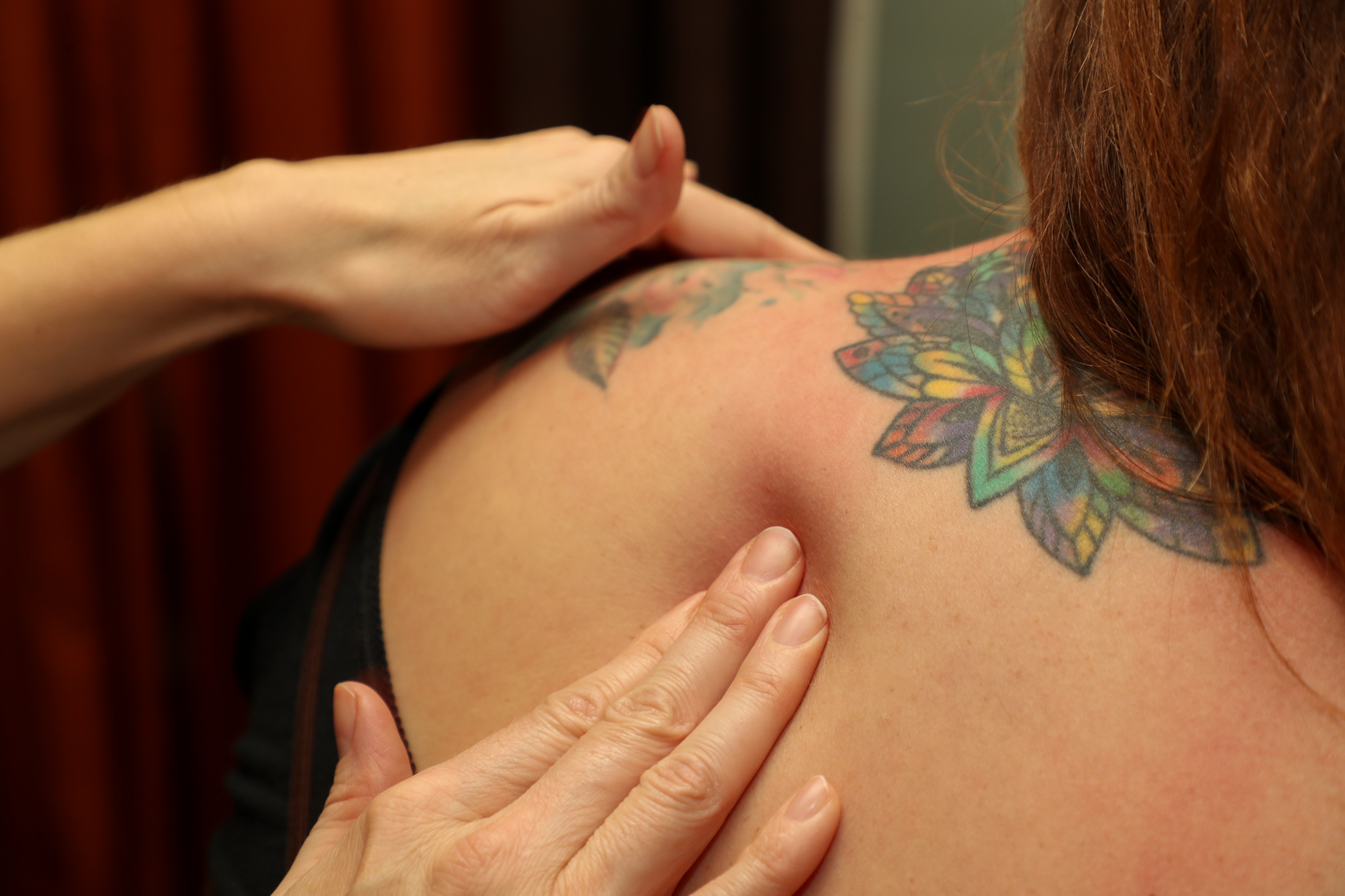Induction Massage
In today’s medical landscape, expectant mothers are often engaged in discussions about labor induction by their healthcare providers.
There are various reasons why a doctor may suggest induction. These include not allowing the pregnancy to proceed past 41 weeks, the baby being oversized, abnormal fluid levels, high blood pressure, and gestational diabetes. As they approach the 39th week of gestation, many mothers feel ready to give birth due to physical discomforts and a desire for a specific doctor to deliver their baby.
Understanding what medical inductions entail is crucial. A medical induction requires careful preparation to ensure the body is ready for the intervention
The induction of labor is a three-step process involving cervical ripening, breaking the amniotic sac (often referred to as “breaking the water”), and initiating contractions. The primary aim of the initial two steps is to ready the body for an effective contraction response.
Cervical ripening is the first step, entailing structural modifications in the cervix to accommodate labor contractions. The level of intervention required to alter the cervix largely hinges on how close labor is to occurring naturally. Some individuals may enter labor immediately following the intervention, while others might begin experiencing it the next day. For most, the drug Pitocin is necessary to kickstart contractions.
A thorough cervical assessment is undertaken to devise an appropriate intervention plan. This evaluation (Bishop Score) includes measuring cervical dilation (the degree of opening), effacement (the thinness or thickness of the cervix), station (the position of the cervix within the pelvis), and consistency (the softness or firmness of the cervix) .
While the Bishop score isn’t the most precise predictor of successful labor induction, it remains a valuable guide for intervention decisions. A low Bishop score indicates that the cervix isn’t adequately prepared for labor, prompting interventions to ripen the cervix. This process ensures sufficient opening for the next step — breaking the amniotic sac.
Although hormones contribute to the natural ripening of the cervix, prostaglandins take center stage in the induction process. Interventions targeting cervical ripening aim to either trigger the body’s own prostaglandin production or introduce them artificially.
Prostaglandins form part of the body’s innate inflammatory response, steering blood flow towards injured areas and deploying white blood cells to guard against infection. They interact with the cervix, enhancing blood flow and promoting softening and stretching. If these interventions render the body ready for labor, no further steps may be necessary.
Step 1: Cervical Ripening Methods
Membrane sweeping: It is the first method used to encourage the release of prostaglandin in the cervix. This method is performed towards the end of pregnancy to reduce the chances of post-date pregnancy. During a vaginal exam, the care provider sweeps their finger into the cervical opening and swirls around the cervix, separating the amniotic sac from the lower part of the uterus. If the care provider is unable to access the cervix, they may sweep the outside of the cervix. This technique causes irritation to the cervix, leading to the release of prostaglandin and increased blood flow to the area. Possible side effects include pain, bleeding, irregular contractions, accidental rupture of the sac, and prolongation of pre-labor before transitioning into an established labor pattern. In some cases, multiple sweeps may be necessary.
Prostaglandin: If a membrane sweep does not sufficiently ripen the cervix, prostaglandin can be administered near the cervix. This medication is available in the form of a gel or tablet. A low dosage is used for women who have previously gone through labor. Close monitoring of the mother and baby is necessary, with a follow-up after 6 hours for gel and 12 hours for a tablet. If the cervix does not ripen, another dosage or a mechanical opening device may be used. If the cervix opens enough, the next step is to rupture the amniotic sac. Possible side effects of prostaglandin include sharp pains around the cervix and cramping of the uterus, as well as nausea, diarrhea, fever, and hyperstimulation of the uterus. In cases of persistent hyperstimulation, a cesarean delivery may be required.
Mechanical ripening: This method relies on the woman’s own production of prostaglandin. An inflatable balloon or double balloon is placed in the lower part of the uterus, between the amniotic sac and cervix.
The balloon is then inflated with 30 to 80 ml of sterile solution, applying constant pressure on the cervix. This stimulation helps release prostaglandin and stretches the cervix, which may stimulate oxytocin production and contractions. The balloon will fall out once it has stretched the cervix enough. At this point, the amniotic sac may rupture quickly before the cervix closes again. If the balloon does not fall out after 12 hours, the cervix will be reassessed. Possible side effects include discomfort, cramping (though generally less discomfort compared to prostaglandin use), and the risk of the amniotic sac breaking, which can make it challenging to break the water without risking the umbilical cord getting in front of the baby’s head. This can lead to the baby getting into an undesirable position, potentially resulting in a cesarean delivery.

Step 2: Breaking the Amniotic Sac
Breaking the amniotic sac involves the artificial rupture of the membrane to release the fluid around the baby during labor, potentially speeding up the process. However, it does not speed things up in spontaneous labor and can result in unnecessary complications.
In induced labor, the fluid surrounding the baby can prevent labor from progressing effectively. An amnio hook, resembling a long crochet hook, is inserted into the opening cervix to create a hole in the amniotic sac, which then sits inside the cervix. The healthcare provider then uses their finger to enlarge the hole.
Following rupturing of the membrane, the baby may experience an immediate stress response, with an increased heart rate lasting for a minute or two. The cervix may bleed if punctured, and the baby’s head may bleed if scratched by the crochet hook. Prolonged rupture of the membrane can lead to infection.
There is a rare occurrence of velamentous bleeding from the baby and placenta due to a blood vessel running through the amniotic sac. Cord prolapse can occur if the baby’s head is not firmly seated in the placenta, leading to an emergency cesarean section.
Note that with AROM alone, some women may go into spontaneous labor without further interventions.

Step 3: Creating Contractions
Once the cervix is ripened and the amniotic sac is released, the next step is to induce contractions in order to open the cervix using a synthetic version of oxytocin. Unlike spontaneous labor, a medically induced labor does not involve the other hormones in the same way. Early labor is bypassed, making an induced labor quicker once a labor pattern has been established.
Pitocin, an artificial form of oxytocin, is used to induce contractions. While its chemical makeup is the same and it acts on oxytocin receptors in the cervix in the same way, there are some differences in its function.
Pitocin is introduced directly into the bloodstream at a constant rate via intravenous drip. It cannot be altered by feedback from the baby, uterus, mom’s emotions, or environment.
It is unable to pass through the mom’s blood-brain barrier to reach her brain. Pitocin in the blood also reduces oxytocin in the brain. Unlike oxytocin, Pitocin is unable to influence the mom’s bonding behavior with the baby.
It can cross the baby’s blood-brain barrier in larger quantities than oxytocin, which alters the baby’s oxytocin systems and bonding behaviors, such as eye contact and sucking at the breast.
During Pitocin-induced contractions, an intravenous catheter is inserted into a vein, and a drip containing Pitocin is administered. The drip rate varies among women and is increased every 30 minutes until 3 to 4 contractions in 10 minutes are formed. The drip is stopped after the baby is born.
The pain during induction is different from spontaneous labor as the process skips the early labor, starting with strong contractions after 2 hours. This does not allow the woman’s body to slowly and steadily raise endorphin levels to relieve pain. The brain is not releasing oxytocin to create a sense of calm. Induced contractions are kept at a steady, strong rate so they remain in an effective pattern. They do not alternate or provide periods of rest or reduce intensity like in spontaneous labor.
Assessing the effectiveness of Pitocin will require multiple vaginal exams to ensure cervical progress. After the baby is born, Pitocin continues to help birth the placenta and prevent postpartum hemorrhage since, in an induced labor, the mom doesn’t produce the surge of hormones needed.
FTP occurs because oxytocin receptors in the uterus did not have enough time to develop into late pregnancy. Cesarean delivery is recommended in such cases.
If you’re considering a more natural approach to inducing labor, there are several options that may be a good fit for your body if it is ready. One such alternative is an induction massage, but before we delve into that, let’s explore some other natural methods:
Methods to Create Contraction:
1. Spicy Foods: Foods like spicy chicken from Chick-fil-A, Thai cuisine, or Mexican dishes can stimulate your digestive system and activate your muscles, potentially triggering labor.
2. Intimacy: Remember the saying, “hugs before drugs!” Engaging in sexual activities can boost the production of prostaglandins, hormones found in semen that can help soften the cervix. Gentle stimulation through kissing, hugging, and fondling can also release natural oxytocin, stimulating uterine contractions. However, avoid overstimulating the nipples as it can lead to unwanted effects.
3. Visualization Techniques: Pair nipple or clitoral stimulation with visualization exercises. Imagine a rosebud gradually blooming open while directing soft breaths towards your vaginal region.
4. Walking: A gentle stroll can stimulate your body and encourage labor. Avoid brisk walks though, as they can divert blood flow away from the uterus.
5. Warm Baths or Showers: Take time to unwind in a hot bath or shower. Have your partner gently pour water over your belly and nipples, or simply let the warm water cascade over your abdomen.
6. Release of Fear: Emotional blocks can inhibit labor. Letting go of any fears or pent-up emotions can help, as these can trigger the release of hormones that cause cervical tightness, preventing its natural relaxation.
7. Acupressure and Acupuncture: Consult with a professional who can work on specific pressure points to relax your body and stimulate the uterus, effectively jump-starting labor.
These methods are based on techniques from the HypnoBirthing-Mongan Method 2nd edition book. Now, let’s explore the potential benefits of an induction massage as a natural, gentle way to encourage labor…
Immerse yourself in the extraordinary advantages of our bespoke Induction Massage. This distinctive therapy fuses the efficacy of massage and acupressure with a select mix of essential oils designed to promote uterine contractions. This potent blend works magic on your uterus while activating vital acupressure points, naturally elevating oxytocin levels to bolster your body’s innate processes.
This specialized massage zeroes in on specific acupressure points to aid in your baby’s descent, cervical dilation, and the easing of uterine contractions. By alleviating tension in the sacrum and pelvic region, we pave the way for your baby to descend more comfortably into the pelvic area.
If you’ve advanced to or beyond week 37 of your pregnancy, rest easy knowing our induction massage is entirely safe for both you and your baby. During the session, you might experience some abdominal tightening, detect movement from your baby, and feel pressure in the pelvic region.
Usually, within a span of 2 to 5 days following the massage, you may witness the expulsion of your mucus plug (uterine seal) and the commencement of surges (contractions), which are indicative of the initial stages of labor.
Embrace the organic path of childbirth and indulge in our Induction Massage. It’s a treat well-deserved

Offers & Packages
Flexible Scheduling
I try to be as flexible as possible for all of our clients! Sometimes arrangements can be made for emergencies outside of regular business hours. I also always make sure we’re available for contact 24/7.

Get In Touch!
Contact The Happy Mama Place today with any questions, concerns, or to book an appointment!
